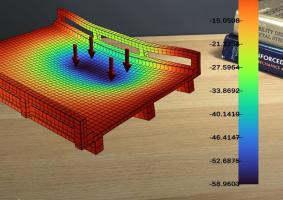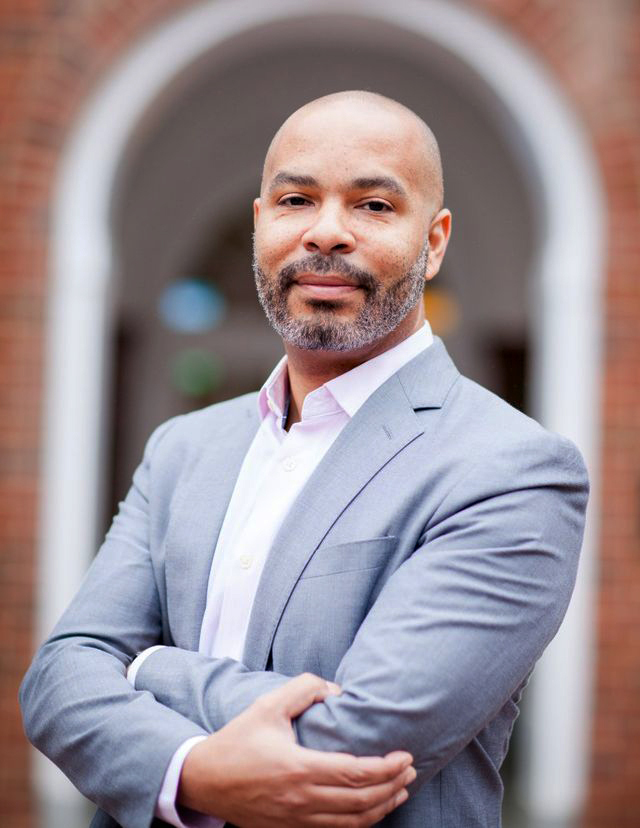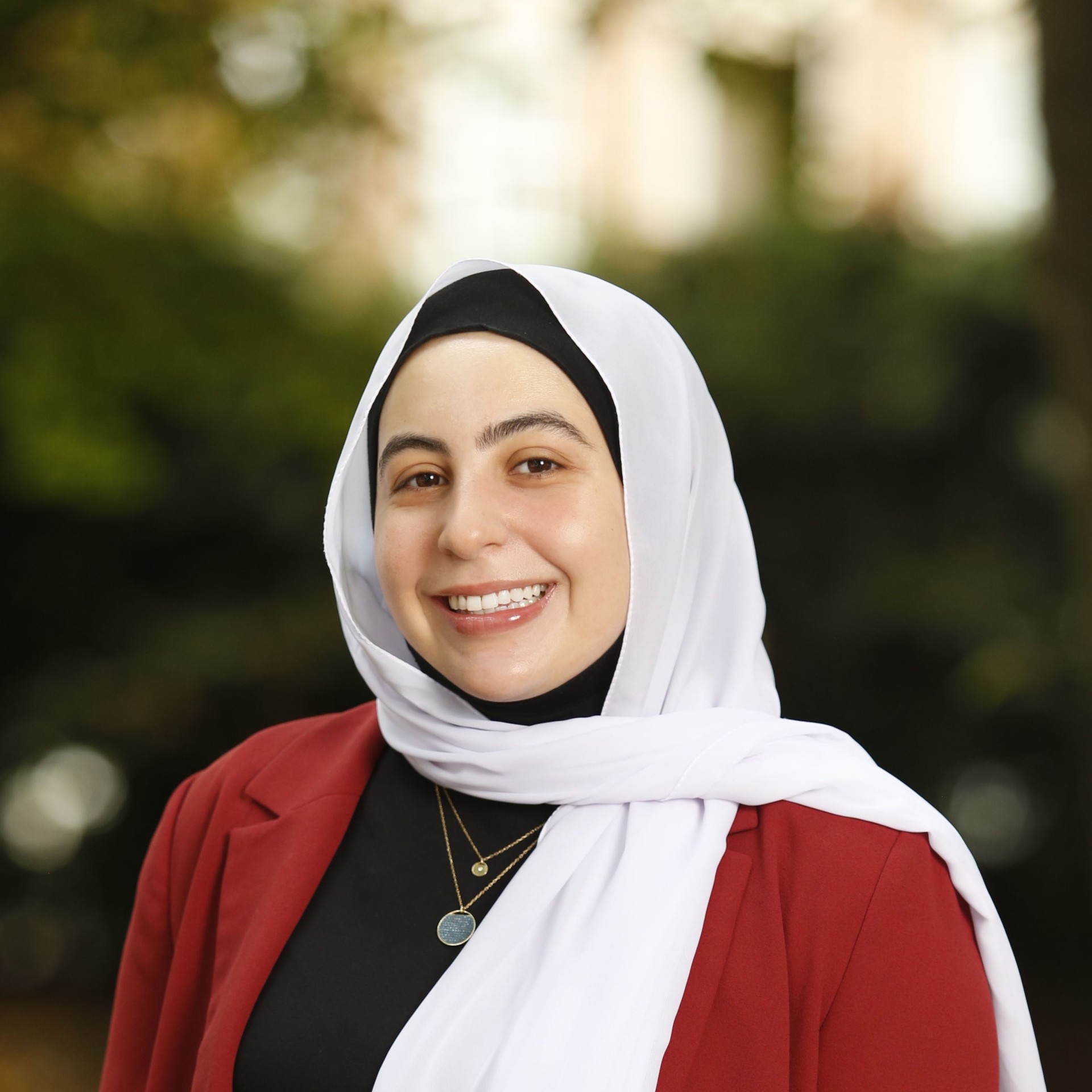
University of Virginia School of Engineering and Applied Science professor Devin Harris, who chairs the Department of Civil and Environmental Engineering, likes to provide students with the structure they need to fully understand concepts.
In fact, he teaches courses related to the design and behavior of structural systems.

When trying to communicate how mechanics can change after a load is applied to a structural column, for example, just as professors before him attempted to describe the behavior, he has drawn two-dimensional representations on a chalkboard to illustrate buckling. However, with all the other angles missing, the drawings have sometimes fallen, well, flat.
“3D behavior is simply hard to visualize and illustrate in a 2D drawing,” Harris said.
To better relate what happens in three dimensions, he has gone to more drastic measures — taking plastic rulers and applying downward force with his hand. Most of the time, predictably, the rulers have snapped, with his own hand bearing the brunt.
“It’s painful,” the professor said — not to mention the ever-growing pile of pulverized measuring sticks.
While he’s willing to do just about anything to get a concept across to his students, he may not have to use such crude approaches much longer.
As the principal investigator for a National Science Foundation pilot study this spring, Harris will introduce his Structural Design students to a new mobile augmented reality app, created by undergraduate students in his research group, that allows users to test the limits of construction components: beams, frames and trusses, on up to complete bridge forms.
What will be built, however, is the students’ understanding.
“Even though I could solve problems as an undergraduate, it wasn’t until I got to grad school that I really understood the phenomena behind what I was trying to solve,” Harris said.
From his experience teaching, he's found, the challenge associated with truly understanding structural behavior appears to be a universal issue for students in mechanics-oriented classes.
“And so that's the angle we’re leaning into.”
How the STRUCT-AR App Works
The app, dubbed STRUCT-AR, is set up to be easy to use if you’re a student with a few civil and environmental engineering courses under your belt, such as Statics, which deals with objects at rest or in equilibrium, and Strength of Materials.
You select a model. Let’s say it’s a bridge with guardrails. Then you use the app to explore a question, such as: “How will the structure react if I increase the loads to this amount?" The increased loading might represent the effect of an oversize vehicle crossing the bridge, for example.
Harris has posted a video of the beta version of the app that demonstrates bridge deforming under just such a load. Through the app, the user can view the bridge from any angle. The app takes into consideration the basic known complexities involved in the analysis, such as not only loads, but boundary conditions and material properties, to demonstrate the behavior that will occur.
But bridges are just one path to learning. Students will have the option to interact with almost any model to answer critical mechanics-based questions.
“The app allows you to bring in models of any structural system,” Harris said. “That could be a beam, a column, a compression cylinder. We can take that FEA (finite element analysis) model, and they can increase the scale and walk around it. They have to hold their phones and stay within view of the screen, but as they inspect, the structure stays where it is spatially.”
The app works on any standard smart phone or tablet, so the students can take their educational experience with them wherever they go.

Currently led by Harris’ doctoral student Ayatollah S. Yehia, the UVA team behind the app, which has had seven computer science students developing it over time, plans to add additional features before its spring test drive.
Yehia is a UVA Engineering Teaching Fellow who aspires to a career in academia. She has already run some limited studies with the app. They’ve demonstrated early success, she said, especially among visual learners.
“We’ve already had students in one-hour studies say how this app would’ve helped them in a classroom setting to visualize magnitudes of movement and stress,” she said. “I’m excited to see how students learn with the app as a companion throughout the semester.”
In addition to overseeing the app development and executing the demo studies, Yehia has interviewed participants and analyzed their data, and collected and analyzed baseline data — Harris’ students from this past spring — for comparison. She’ll do the same for the wider study this coming spring.
The project is a collaboration with Virginia Tech associate professor Diana Bairaktarova, who offered her expertise in assessing technology-based learning. She provided the team the approach to measure if, and by how much, the technology improves students’ abilities to visualize and analyze abstract descriptions of structural engineering design problems.
The Project That Was a Pivot
Given the goal of better awareness in assessing, is there a potential use for the app, which will be open source, in the real world? Harris said it’s possible. The National Science Foundation educational project, in fact, started out as a pivot.
“We started with this idea of using augmented reality for bridge inspection,” he said. “And the idea was: Could you use augmented reality to do the condition monitoring? Could you have collaborative virtual inspections using these emerging visualization technologies? Because smart phones have the cameras, and you can do voice to text. There are all kinds of things you could do to improve the process.
“So, we made a little prototype app that could take an image of a crack and measured and demonstrated the concept of how our virtual twin structure would be affected. That gained a little traction, but it didn't really get off the ground with one of our sponsoring agencies.”
That was a few years ago now, Harris said.
“The technology is now becoming more accepted by civil engineers around the country and technology-enhanced inspection is becoming a practice-ready solution to enhance bridge inspections,” he noted.